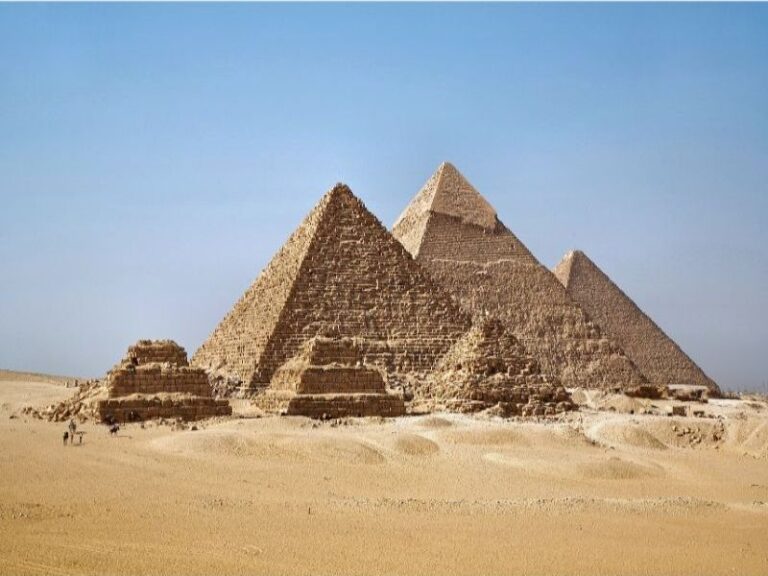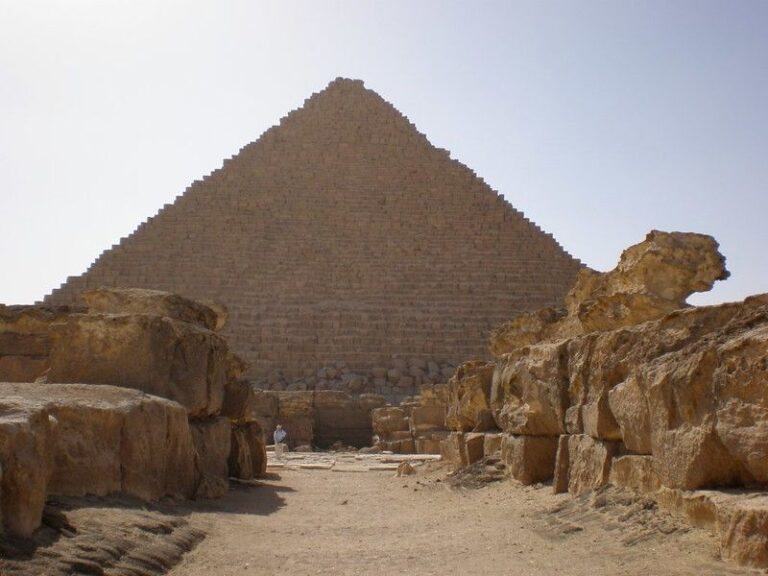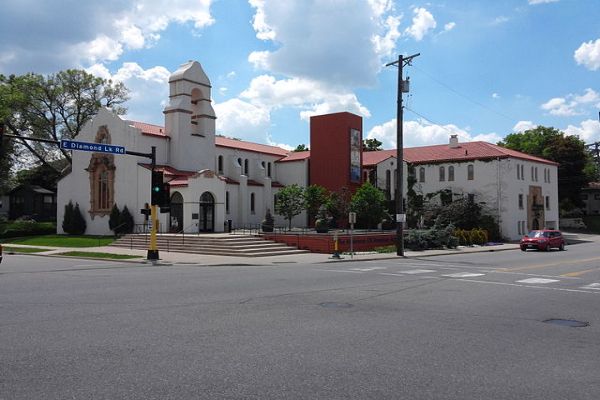The Mystery of The Great Pyramid’s Construction
The Great Pyramid of Giza is one of the most magnificent man-made structures in history. Built around 2560 BC as a tomb for the Pharaoh Khufu, it is the oldest and largest of the three pyramids located in the Giza pyramid complex. For over 3,800 years, it remained the tallest structure built by humans until the completion of the Lincoln Cathedral in 1300 AD [1].
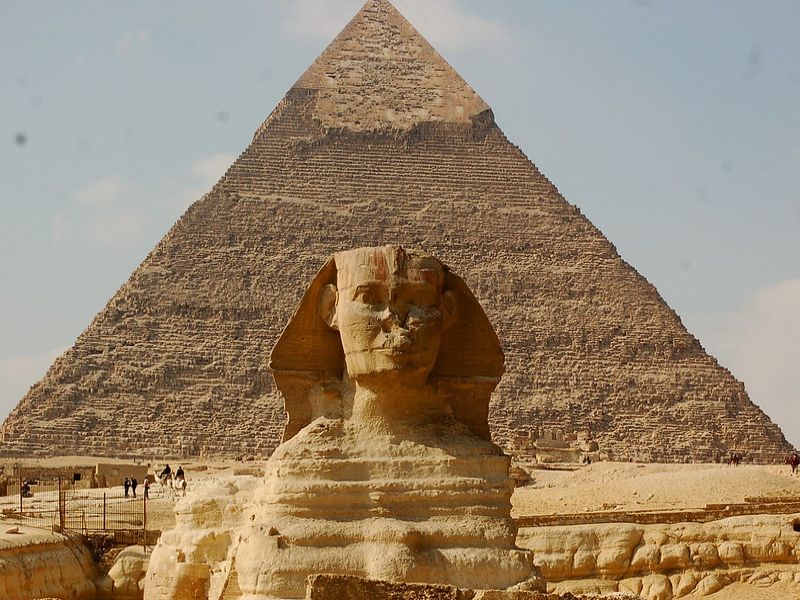
Even today, the Great Pyramid continues to be a breathtaking marvel of ancient Egyptian architecture and engineering. Let’s take a closer look at some fascinating facts about its history, construction, mysteries, and significance.
The Great Pyramid: An Architectural and Engineering Marvel
Construction of the Great Pyramid
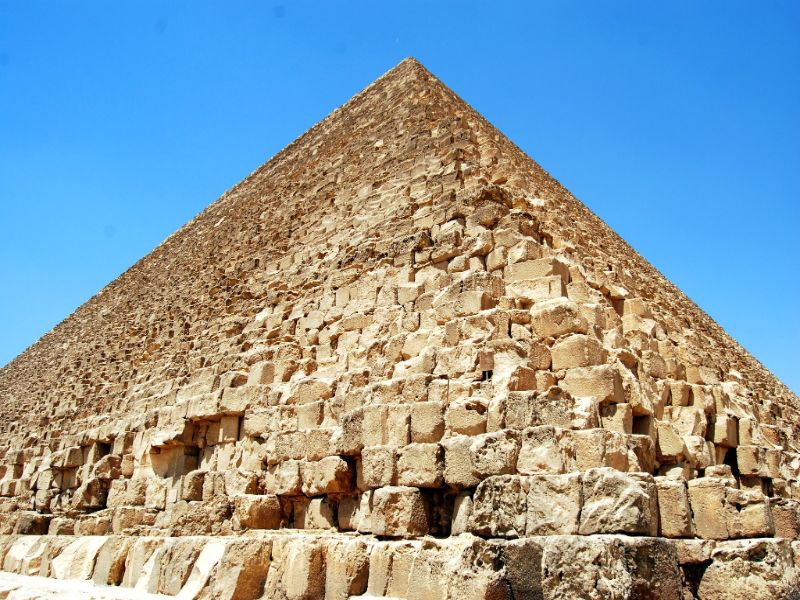
The Great Pyramid was built over a period of around 20 years during the reign of Pharaoh Khufu, the second king of the 4th dynasty of ancient Egypt[2].
Mini paragraph: The pyramid was constructed as an elaborate royal tomb for Pharaoh Khufu, likely starting soon after he took the throne around 2589 BC. It took around 20 years to complete this monumental project, which involved quarrying, transporting and precisely placing over 2 million heavy stone blocks.
- It is estimated that the construction involved a workforce of around 20,000 skilled laborers, as opposed to slaves [3]. The workers were likely paid Egyptian farmers who provided the labor during the flood season when they were not occupied in agricultural activities[4].
- The pyramid was constructed using around 2.3 million limestone and granite blocks, with an average weight of 2.5 tons per block[5].
- The blocks were cut from nearby quarries using copper chisels and stone hammers[6]. They were transported via sleds and wooden tracks along the Nile River and moved into place using ramps, levers, and a pulley system[7].
- The purpose of the pyramid was to serve as an elaborate tomb for Pharaoh Khufu, as Egyptian kings of the era sought to be buried alongside all necessities for a comfortable afterlife[3].
- The internal structure consists of three chambers – the King’s Chamber, the Queen’s Chamber, and an unfinished underground chamber. Intricate passageways and galleries connect the chambers[2].
- Originally rising to a height of 481 feet, the pyramid was topped with smooth white limestone casing stones covering the stepped core structure below. Most of the outer casing is now gone[2].
Additional Details on Construction:
- The pyramid covers an area of over 13 acres and originally stood at a height of 146 meters. This mammoth scale and size required meticulous planning, oversight, and coordination over the 20-year construction period.
- It is estimated that 5.5 million tonnes of limestone, 8,000 tonnes of granite, and 500,000 tonnes of mortar were used in its construction. This material had to be quarried, transported, and precisely installed.
- The outer casing stones were highly polished limestone transported from Tura, near modern Cairo. This conferred a smooth, gleaming finish visible from miles away.
- Inside the pyramid, the King’s Chamber is built entirely from granite brought from Aswan, over 500 miles away. The granite blocks used weigh up to 80 tonnes each.
- The change in internal structure from horizontal to sloping layers indicates the builders adapted techniques as they gained experience.
Mini paragraph: The pyramid’s sheer monumental scale is evident from the vast amounts of materials used – over 5 million tons of stone and half a million tons of mortar. Dense granite for the internal chambers was transported from hundreds of miles away. The evolution in architectural design and adaptation of techniques over the long construction period also stand testament to the skills and ingenuity of the builders.
Estimated Materials Used in Pyramid Construction
| Material | Amount |
| Limestone | 5.5 million tonnes |
| Granite | 8,000 tonnes |
| Mortar | 500,000 tonnes |
Mysteries and Secrets
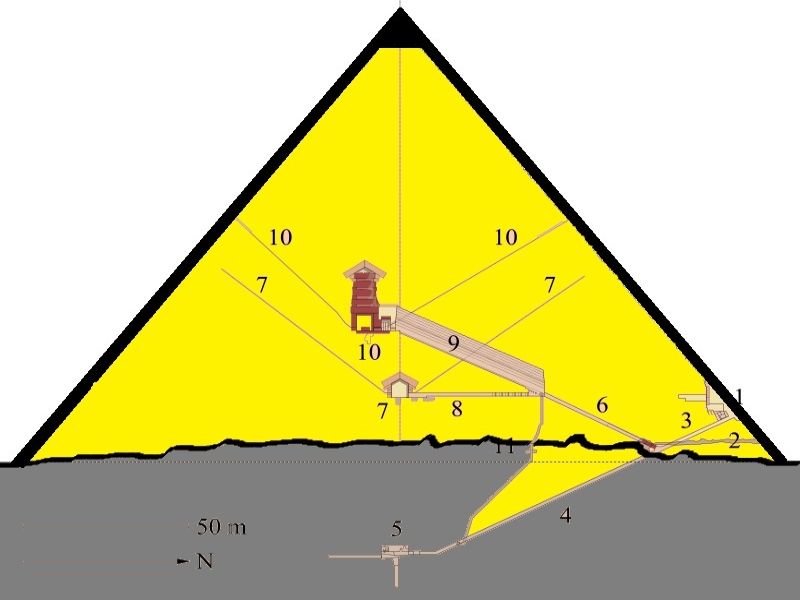
Despite extensive research and studies, several mysteries still surround the Great Pyramid:
Great Pyramid: While much is known about the Great Pyramid today, especially regarding its architecture and history, many specific details about exactly how it was constructed and utilized remain unknown, giving rise to numerous theories and hypotheses. Several aspects like its internal chambers and alignment techniques continue to be shrouded in mystery.
- Construction techniques – How the ancient Egyptians managed to transport and lift the heavy blocks into place with such precision remains uncertain. Ramps, levers, and pulley systems are hypothesized to have been used[6].
- Hidden chambers – In 2017, scientists discovered a large void within the pyramid using radiography techniques. Its purpose remains unclear[7].
- Alignment – The pyramid faces true north with remarkable precision. The four sides align almost perfectly with the four cardinal directions[5].
- Interiors – The purposes of some inner chambers like the Grand Gallery still remain ambiguous. Advanced mapping is still revealing hidden details[6].
Additional Details on Mysteries:
- In 2020, another large empty space was detected adjacent to the Grand Gallery using muography techniques. Its function is yet to be confirmed by direct exploration.
- Thermal anomalies on some stone surfaces indicate there may be hidden entrances, shafts, and chambers still to be discovered through additional scans.
- The original entrance to the Great Pyramid is unknown. The tunnel used today was crudely cut through the masonry by early Arab treasure hunters.
- There are significant gaps in our knowledge of the symbolic significance, spiritual rituals, and funerary rites associated with the pyramid’s construction and use.
Radiography and Thermal Scanning: Modern archaeological techniques like radiography and thermal scanning have revealed surprising hidden voids and anomalies within the pyramid that warrant further analysis. But major questions remain about the original entrance, symbolic purposes, and especially the techniques used to achieve such magnificent precision and alignment, giving rise to ramp and lever hypotheses.
Interior Structures of the Great Pyramid
| Structure | Description |
|---|---|
| 1. Original Entrance | Original entrance on the pyramid’s north face. Connects to the North Face Corridor. |
| 2. Robbers’ Tunnel | Modern tourist entrance known as the Robbers’ Tunnel. |
| 3. Descending Passage | Passageway leading downward from the entrance. |
| 4. Subterranean Chamber | Chamber connected to the descending passage. |
| 5. Ascending Passage | Passage connecting the Subterranean Chamber to the rest of the pyramid’s interior. |
| 6. Queen’s Chamber | Chamber within the pyramid with air-shafts. |
| 7. Horizontal Passage | Passage connecting the Ascending Passage to the Grand Gallery. |
| 8. Grand Gallery | Inclined corridor with ramps on the sides. |
| 9. King’s Chamber | Chamber within the pyramid with air-shafts. |
| 10. Grotto and Well Shaft | Grotto and well shaft within the pyramid. |
Post-Construction History
- Over the centuries, the Great Pyramid suffered damage from tomb robbers and vandals who looted the structure for valuables and building materials[3].
- In the 12th century AD, the Egyptian sultan Al-Aziz Uthman attempted to demolish the pyramid but only succeeded in leaving a gash in the north face[2].
- Starting from the 19th century, numerous archaeological excavations have been undertaken to study the pyramid in detail[6].
- Restoration work has been carried out from time to time, including efforts by archaeologist George Reisner in the early 1900s to preserve the granite surfaces and fix damaged casing stones[2].
Additional Details on Post-Construction Events:
- Graffiti left by ancient Greek and Roman tourists still remains visible in some interior chambers, providing insights into how the pyramids were viewed thousands of years ago.
- In the 9th century, an earthquake loosened some of the outer stones. These were carted away by Bahri Sultan An-Nasir for use in Cairo construction projects.
- Amateur explorers in the 17th and 19th centuries dug numerous tunnels haphazardly, permanently damaging the internal structure in places.
- From the 1930s, more systematic archaeological digs created maps, took measurements, and carbon-dated artifacts found around the site.
Pyramid Construction: For centuries after its construction, the pyramid suffered looting, vandalism, and structural damage from both human and natural causes. But from the 19th century onwards it has seen extensive scientific archaeological study, including excavation, mapping, dating analysis, and restoration work, revealing many valuable insights.
Key Events in the Pyramid’s Post-Construction History
| Year | Event |
| 12th century AD | Damage from attempted demolition by Egyptian sultan |
| 9th century AD | Earthquake and looting of casing stones |
| 17th-19th centuries AD | Haphazard tunneling by amateur explorers |
| The 1930s onwards | Systematic archaeological excavation begins |
Architectural Significance
The magnificence of the Great Pyramid is evident from its architectural records and features:
Ancient Wonder: As the only surviving ancient Wonder of the World, the Great Pyramid of Giza stands out for its enormous scale, precision, alignment, and sheer grandeur, representing outstanding ancient engineering capabilities. Its records for the tallest structure and largest single building by volume lasted millennia.
- For 3,800 years until the 14th century, it remained the tallest man-made structure in the world at 481 feet. This record highlights the outstanding engineering capabilities of ancient Egyptians[1].
- It is the only one of the original Seven Wonders of the Ancient World to still remain largely intact. The longevity and durability are unmatched[2].
- Considering the estimated 2.3 million blocks used in its construction, the sheer scale and size are incredible[5].
- The alignment with cardinal directions and precision of construction demonstrate remarkable astronomical and geometrical knowledge[5].
- Taken together, the ambition, planning, and execution make it the most iconic symbol of ancient Egyptian civilization.
Additional Details on Architecture and Engineering:
With each side averaging 756 feet, the precision of the lengths, angles, and alignments display astounding architectural skill with simple tools.
The sides are oriented almost perfectly N-S and E-W, with maximum errors of only 0.05%. This required advanced astronomical observation and geometric techniques.
It is estimated that the blocks were cut and placed with a tolerance of just 0.4 inches across millions of blocks. Modern technology could achieve only a 0.2-inch tolerance.
The pyramid’s location, dimensions, and alignments have symbolic significance related to ancient Egyptian cosmology, mythology, and rituals.
The original entrance would have been concealed and the interior maze-like to deter grave robbers. This demonstrates early security engineering.
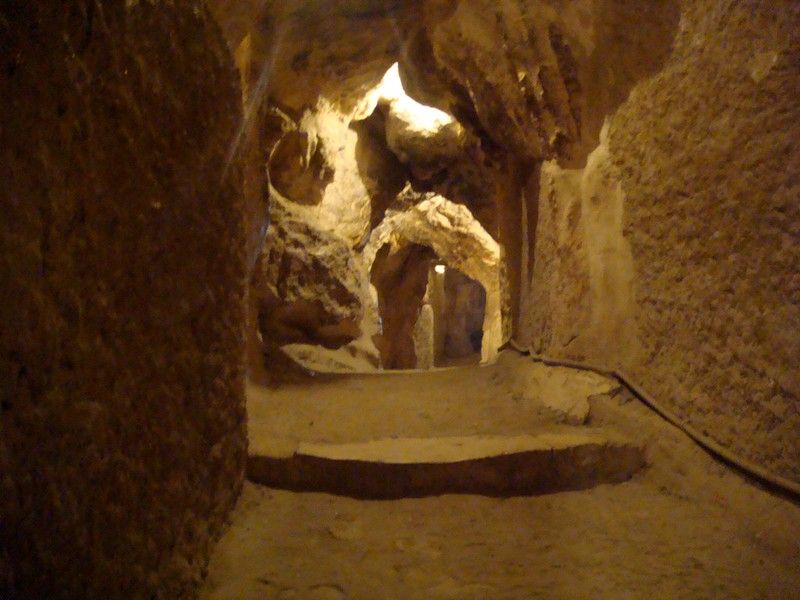
Pyramid: Both externally and internally, the pyramid exhibits remarkably skillful architectural design and construction quality, especially considering the limited tools available. The alignment precision surpasses that achievable by modern builders, further highlighting ancient Egyptian engineering prowess.
Architectural Records Set by the Great Pyramid
| Record | Period Lasted |
| Tallest man-made structure | 3,800 years |
| Largest single structure by volume | 3,800 years |
| Most precisely aligned structure | 4,500 years |
Related Article: The Great Pyramid of Giza Ancient Wonders
Modern Hypotheses and Experiments
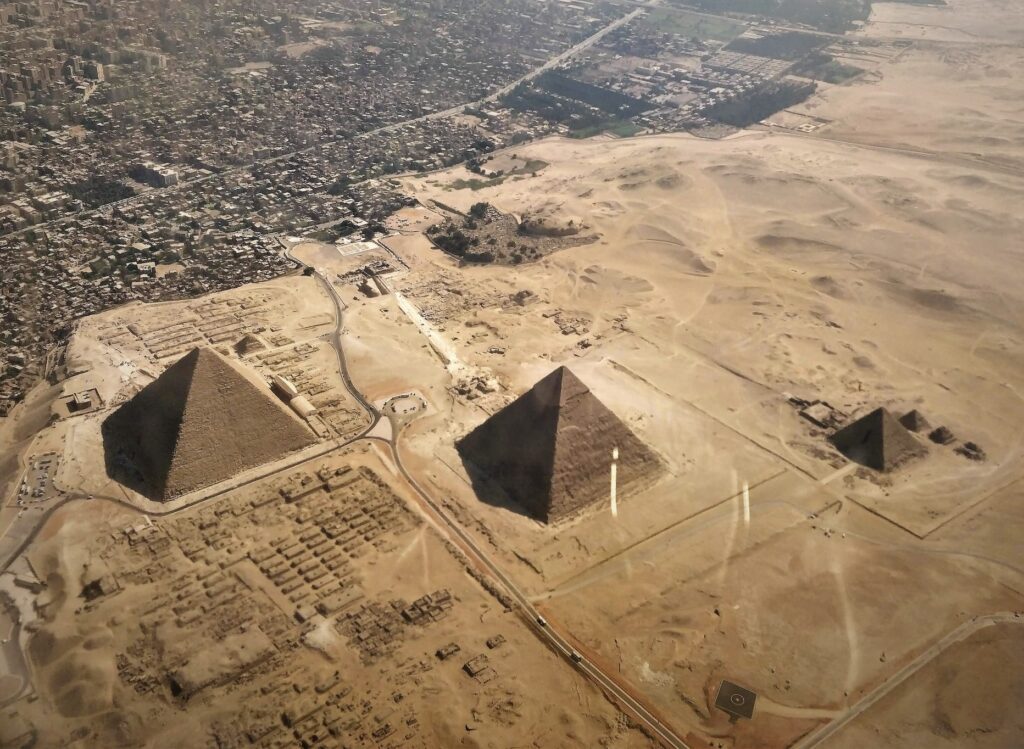
In recent decades, various theories have been proposed regarding the construction techniques:
Mini paragraph: In the absence of definitive historical records, many modern Egyptologists, architects, and engineers have proposed theoretical techniques for how the pyramid could have been constructed using the limited tools available to ancient Egyptians. Experimental archeology has tested ideas like levering and ramps to build small-scale replicas.
- Levering methods – Small and large levers could have been used in conjunction with ramps to incrementally lift blocks. Experimental constructions have demonstrated such techniques[6].
- Internal ramps – French architect Jean-Pierre Houdin has hypothesized the use of an internal spiral ramp to lift blocks inside the pyramid. Some evidence of internal ramps has been found[6].
- Building experiments – In the 1990s, teams led by Mark Lehner and Nova demonstrated pyramid construction at a small scale using ancient tools and techniques like sleds, tracks, levers, and ramps[6].
- Water shafts – The existence of water shafts and paleo-harbors near the pyramids suggests waterways were used to transport blocks from nearby quarries[9].
- In 2018, archaeologists discovered remnants of ancient sleds and tracks at a quarry, giving insights into how the massive blocks were transported[10].
Additional Details on Modern Research:
- In the 1980s, French materials engineer Joseph Davidovits proposed that the blocks be cast on-site using limestone concrete molded in wooden forms. This theory remains disputed.
- Cosmic ray muon radiography shows evidence of previously unknown voids and gaps inside the structure that warrant further scanning and exploration.
- Geological analysis of stone samples indicates many blocks were quarried locally from the Giza plateau and its vicinity rather than further afield.
- Ongoing 3D laser scans and computer modeling continue to reveal new micro-details about tool marks, block placements, and construction sequences.

Mini paragraph: Both mystical and scientific theories have been proposed for pyramid construction techniques. While definitive proof remains elusive, empirical analysis provides important clues. Emerging technologies like 3D scanning are further enhancing archaeological understanding.
Modern Techniques Used in Ongoing Investigations
| Method | Usage |
| Muon radiography | Detecting hidden chambers |
| 3D laser scanning | Mapping precise details |
| Computer simulation | Testing construction methods |
| Materials analysis | Identifying stone sources |
The Great Pyramid Workforce Operations
The construction of the Great Pyramid of Giza was a massive undertaking that required a large and well-organized workforce. The exact number of workers is unknown, but estimates range from 20,000 to 100,000 people[11].
The workforce was likely composed of farmers, laborers, and skilled craftsmen. They were organized into teams that were responsible for different tasks, such as quarrying, transporting, and lifting the stones.
The workforce was probably divided into two main groups:
- The quarrying team was responsible for extracting the limestone blocks from the nearby quarries.
- The transportation team was responsible for transporting the blocks to the pyramid site.
The transportation team used a variety of methods to move the blocks, including rollers, levers, and inclined planes. The blocks were likely moved on sleds or boats during the flood season when the Nile River was high.
The lifting team was responsible for raising the blocks into place. They used a variety of techniques, including ramps, levers, and pulleys.
The construction of the Great Pyramid was a complex and challenging undertaking. It required a great deal of planning and organization.
Related Article: The Great Pyramid of Giza: Timeless Wonder
Ending
The scale, precision, and endurance of the Great Pyramid of Giza are testaments to the extraordinary engineering and construction capabilities of ancient Egyptians. While some of the specifics remain shrouded in mystery, ongoing research and discoveries continue to reveal fascinating details about the materials, workforce, techniques, and tools used to erect this magnificent monument. As the only surviving wonder of the ancient world, it remains a breathtaking glimpse into the past and a universally admired symbol of ancient Egyptian civilization.
Mini paragraph: In conclusion, the Great Pyramid stands out as one of the most preeminent and enduring architectural achievements of antiquity. Despite many enduring mysteries, its sheer size and technical excellence demonstrate the remarkable ingenuity of its Bronze Age builders. It continues to captivate the human imagination as an epic example of ancient Egyptian art, culture, and spirituality.
FAQs
Q1. When was the Great Pyramid of Giza built?
The Great Pyramid was built over a 20-year period around 2560 BC during the reign of the Pharaoh Khufu[2].
Q2. What is the Great Pyramid of Giza made of?
It is made of an estimated 2.3 million limestone and granite blocks, weighing an average of 2.5 tons each[5].
Q3. How tall is the Great Pyramid of Giza?
It originally stood at 481 feet (147 meters) and now stands at 455 feet (139 meters) tall after centuries of damage and erosion[2].
Q4. How many workers built the Great Pyramid of Giza?
It is estimated that around 20,000 skilled workers were involved in its construction over 20 years[2].
Q5. What is inside the Great Pyramid of Giza?
The interior contains a series of passages, galleries, and chambers including the King’s and Queen’s chambers where the Pharaoh’s body and worldly possessions were entombed[2].
Q6. How did they build the Great Pyramid of Giza?
The exact construction techniques remain uncertain, but likely involved ramps, levers, and pulleys to transport the blocks into place with high precision[6].
Q7. Why were the Egyptian pyramids built?
Pyramids were elaborate royal tombs built to bury the Pharaohs along with necessities for the comfortable afterlife they believed they would enjoy[3].
Q8. How many pyramids are at Giza?
There are three major pyramids in the Giza complex – The Great Pyramid, the Pyramid of Khafre, and the Pyramid of Menkaure[2].
Q9. Who first excavated the Great Pyramid?
In the 19th century, British archaeologist Flinders Petrie first excavated and studied the pyramid using modern archaeological methods[8].
Q10. Can you go inside the Great Pyramid of Giza?
Yes, parts of the interior passages and chambers of the pyramid can be toured, except for the King’s Chamber which is closed to the public[5].
[1] https://www.worldatlas.com/articles/10-astounding-facts-about-the-great-pyramid-of-giza.html
[2] https://www.britannica.com/topic/Great-Pyramid-of-Giza
[3] https://www.history.com/topics/ancient-egypt/the-egyptian-pyramids
[4] https://www.history.com/news/how-long-did-it-take-to-build-the-great-pyramid
[5] https://www.nationalgeographic.com/archaeology-and-history/archaeology/giza-pyramids/
[6] https://en.wikipedia.org/wiki/Egyptian_pyramid_construction_techniques
[7] https://www.bbc.com/news/world-middle-east-64825526
[8] https://www.britannica.com/biography/Flinders-Petrie
[9] https://www.livescience.com/65546-how-egyptians-moved-pyramid-stones.html
[10] https://www.livescience.com/63743-photos-egypt-pyramid-ramps-discovered.html
[11] https://www.pbs.org/wgbh/nova/pyramid/explore/builders.html#:~:text=NOVA%3A%20Herodotus%2C%20the%20Greek%20historian,figure%20more%20like%2020%2C000%20workers
-
What Are The Main Things You Need For Camping

Camping is one of the most enjoyable pastimes available. Who wouldn’t want to go away from the city, pitch a tent beneath the stars, and prepare a delectable supper over an open fire? Camping, whether at campsites, mountains, or on the river, is something I believe everyone should do at least once in their lives.…
-
Best Sleeping Pads for Backpacking and Camping

When preparing for a backpacking or camping adventure, choosing the right sleeping pads is essential for rest. The sleeping pad provides insulation from the cold ground and provides cushioning and comfort. This guide covers how to select the best sleeping pads for backpacking and camping based on different activities. Choosing the Right Sleeping Pad Choose…
-
Sleeping Bags Shape

A Comprehensive Guide to Choosing the Right Sleeping Bag Shape for Your Needs: Mummy vs. Oval vs. Rectangular vs. Semi-Rectangular vs. Square When planning your next camping trip, one of the most important decisions you’ll make is choosing the right sleeping bag. With so many different shapes and styles to choose from, it can be…
-
The Best Backpacking Sleeping Bags Under $100 in 2024

Camping out under the stars is one of life’s great simple pleasures. As the day’s tension fades with the setting sun, you settle into the cozy sanctuary of your sleeping bag, comforted by its warmth. However, not all sleeping bags are created equal when it comes to providing both comfort and portability on the trail. …

